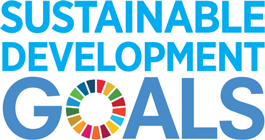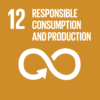Mainstreaming circular consumption with the sharing economy
Discussing how technology, the sharing economy and collaborative consumption can be better leveraged to close the circular consumption loop.
Summary of Discussion
Q5. How can an actor like C&A Foundation, and its strategic partner Fashion for Good, drive more positive change?
- Test certain products on a rental/sharing basis – little risk involved in trial
- Create a Global Reverse Supply Chain Industry Association – central place that pools resources, ideas, best practices
- Create new business models and narratives that shape cultural identity
- More brand partnerships and collaborations
- Raise the education and awareness amongst consumers
- Make goods worth sharing
- Conduct ethnographic research to gain insights into cultural barriers/benefits to circularity
- Involve emerging markets
How can fashion brands / retailers drive more positive change?
- Customise the approach to engage brands/retailers
- Brands should engage consumers on a regular basis and consistently
- Join Fashion for Good
- Be more trustworthy as a brand/retailer
Q4. Which actors do we need to involve more effectively in order to make circular consumption mainstream in the fashion industry?
- Actors in fast growing markets (e.g. India)
- Shopping centres as the providers of fashion
- Icons used to drive consumer behaviour
- Different stakeholders – see a Global Reverse Supply Chain Association with different stakeholders involved
- Small NGOs who make an impact
- Business leaders to push a new business model
- Cross-functional teams that bring different perspectives – finance, marketing, product design, marketing, CSR etc.
- Organisations dedicated to educating the public (C&A Foundation)
- Influencers - make sustainability sexy!
- Logistic/transport providers who have the potential to have great impact
- Employees acting as ambassadors
- Producers and manufacturers, those who produce the goods
Q3. How do we help consumers value access over ownership, on a wider scale?
- Education
- Awareness campaigns
- Appeal to the Aspirationals - demonstrate the positives of the experience while simultaneously communicating the benefits for the planet
- Make it convenient and cost-effective
- Disincentives for consumption so consumers hold responsibility
- Access - there needs to be more platforms out there that offer this service
- Create a new narrative that embodies 'Abundance Without Waste' (BBMG)
- Utilise time as a commodity - easy access vs. tme consumption
- Target influencers who do not conform to circular lifestyles
- Simplify the benefits so it is more easily understood
- Brands/retailers need to design quality and durable products
- Reward consumers who repurpose and recycle
Q2. What are the challenges for fashion brands / retailers to switch to sharing and collaborative business models more widely?
- Making circular models apart of popular culture – e.g. Adidas partnership with Parley (design is desirable, and builds status)
- Convincing people to share clothes/getting them on-board with sharing!
- Brand apprehension – they need to know there is a market for it, and users of fashion need to be less ‘afraid’ of the sharing economy
- Selling circular economy to brands and retailers
- Breaking free from the traditional model ‘status quo’
- Consumer perspective – quality, durability, hygiene concerns and guarantees
- Outdated regulations for classifying waste
- Making sustainability appealing to shareholders
- It requires reverse logistics that retailers may not be equipped for
- Fast fashion – to drive growth, we must sell more goods, which requires new styles each season
- It needs to be an economically viable option
- Lack of involvement from government
What can we learn from these sharing/collaborative examples?
- Sharing initiatives can only be succesful if they are accessible
- Solving consumer demand and delivering on it without sacrificing quality, price, value and convenience
Q1. What are the best examples of sharing and collaborative economy models delivering circular benefits, in and outside the fashion industry?
- Real Real (consignor and customer) their clothes feel worth owning
Rent the Runway and Rent Frock Repeat – clothing rental service
Re/done – jeans remanufactured, an example of ‘upcycling’
Thredup – unwanted clothing marketplace
Food swap apps – Olio
Infinite Style by Ann Taylor – subscription rental service that gives access to looks for a flat rate
Poshmark
Use-or service-driven approach – clothing ‘libraries’, leasing models, peer-to-peer models (e.g. Closet Collective)
Recommerce
London rental of unused car
Gwynnie Bee
Tool Library
AptDeco for buying and selling furniture and appliances
Patagonia Worn Wear (trade it in for repair and credit/buy used)
Renewal shop (partnership with North Face)
- Global Fashion Exchange
- Schwopping
- Pley (monthly toy subscription)
- Tchibo - subscription service
Meet our Special Guests
Style Lend
BBMG
Closed Loop Partners
Fashion Takes Action
C&A
GlobeScan
C&A Foundation
Helpsy
McDonough Innovation
World Resources Institute
Session Moderator
Paris, France




Posts
Back to Top